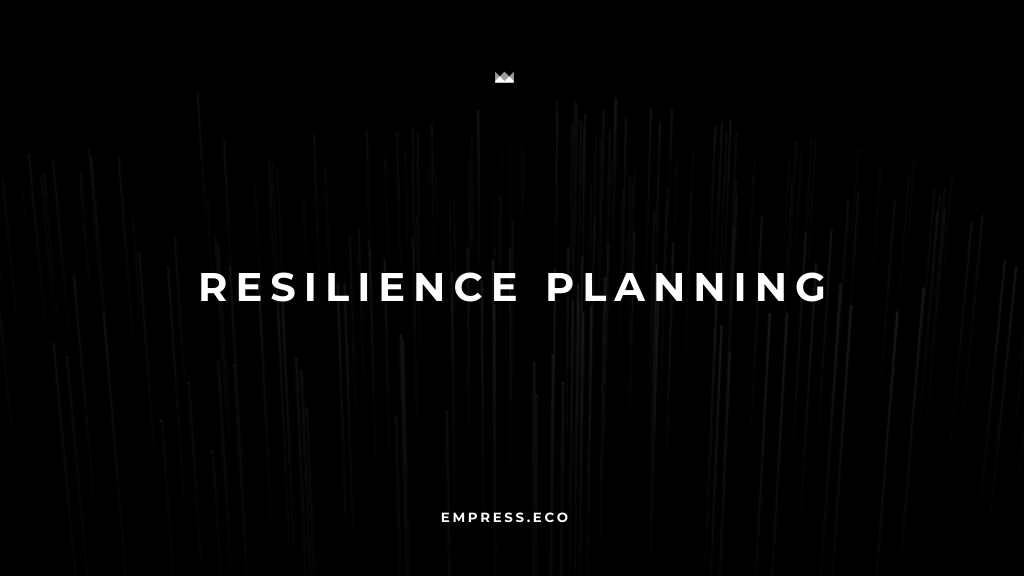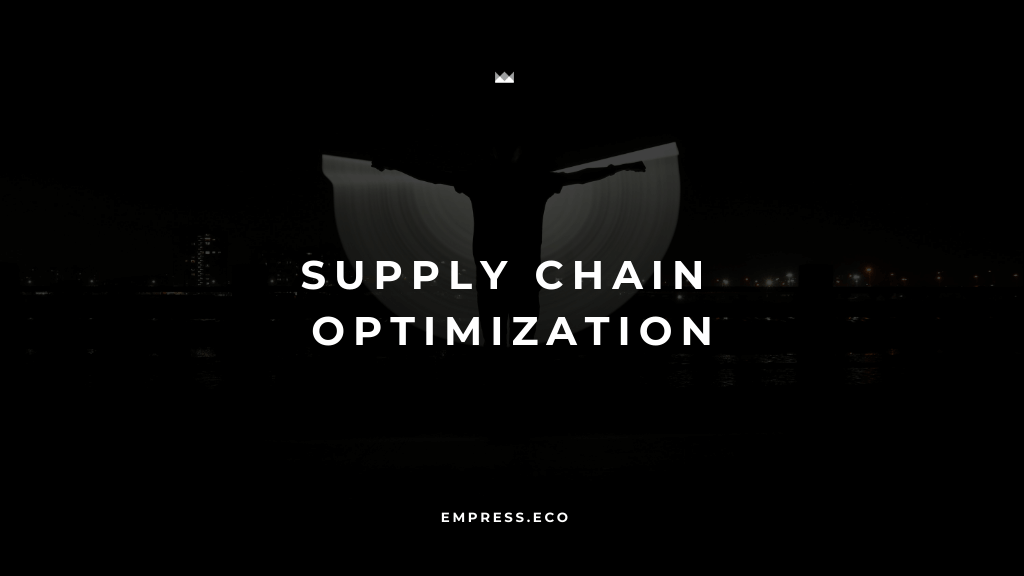The ability to align operations with strategic goals is crucial for long-term success. Yet, this alignment doesn't happen by accident—it requires careful planning, analysis, and ongoing adjustment. This is where optimization roadmapping comes into play. By developing a detailed roadmap, businesses can strategically guide their operations to ensure they not only meet but exceed their objectives. In this comprehensive guide, we'll explore the benefits of optimization roadmapping, the steps to implement it effectively, and the challenges you might encounter along the way.
Why Optimization Roadmapping Matters
1. Strategic Alignment
At the heart of optimization roadmapping is the goal of strategic alignment. When all parts of a business are working toward the same objectives, the organization operates more efficiently and effectively. Strategic alignment means that every department, team, and individual understands how their work contributes to the broader goals of the organization. This alignment fosters a sense of purpose and direction, ensuring that all efforts are channeled toward achieving the company’s vision.
2. Improved Efficiency
Efficiency is the lifeblood of operational success. By systematically identifying inefficiencies and addressing them through a structured roadmap, businesses can streamline their operations, reduce waste, and ultimately do more with less. Whether it’s optimizing resource allocation, reducing redundancy in processes, or leveraging technology for automation, improved efficiency leads to cost savings and better use of time and resources.
3. Enhanced Decision-Making
Decision-making becomes significantly more straightforward with a well-defined roadmap in place. Instead of reacting to problems as they arise, businesses can anticipate challenges and make informed decisions based on a clear understanding of their operational landscape. This proactive approach helps in prioritizing initiatives, allocating resources where they are most needed, and avoiding the pitfalls of knee-jerk reactions.
4. Increased Agility
In today’s fast-paced business environment, agility is key to staying competitive. A well-crafted roadmap doesn’t just help you stick to a plan—it also makes it easier to pivot when necessary. With a clear understanding of your operations and their alignment with strategic goals, your organization can quickly adapt to market changes, emerging opportunities, or unforeseen challenges, maintaining a competitive edge.
Steps to Implement Effective Optimization Roadmapping
Now that we’ve established the importance of optimization roadmapping, let’s dive into the practical steps you can take to develop and implement a roadmap that drives operational alignment.
1. Conduct a Thorough Analysis
Assessing Current Operations
Before you can improve your operations, you need to understand their current state. Start by conducting a comprehensive assessment of your existing workflows, processes, and resource allocations. This assessment should be data-driven, relying on performance metrics, employee feedback, and possibly even external benchmarks to provide a clear picture of where you stand.
- Performance Metrics: Collect quantitative data on key performance indicators (KPIs) relevant to your operations. These might include metrics like production efficiency, customer satisfaction scores, turnaround times, and cost per unit.
- Employee Feedback: Gather qualitative insights from the people who are directly involved in the day-to-day operations. Employees often have a deep understanding of the inefficiencies and bottlenecks that can hinder performance.
- Industry Benchmarks: Compare your operations against industry standards or competitors. This external perspective can highlight areas where you are underperforming or where there is room for improvement.
Identifying Inefficiencies
Once you’ve gathered the necessary data, analyze it to identify inefficiencies and areas for improvement. Look for processes that are overly complex, tasks that are redundant, and workflows that cause delays or errors. This analysis will serve as the foundation for your optimization roadmap.
2. Define Clear Objectives
Setting SMART Goals
With a clear understanding of your current operations, the next step is to define the objectives of your optimization efforts. These objectives should be aligned with your broader strategic goals and should follow the SMART criteria:
- Specific: Clearly define what you want to achieve. For example, rather than setting a goal to "improve efficiency," set a specific target like "reduce production time by 15%."
- Measurable: Ensure that you can track progress toward your goal with quantifiable metrics. This could involve using KPIs such as time savings, cost reductions, or productivity increases.
- Achievable: Set realistic goals that are within your organization’s capabilities. It’s important to challenge your team, but setting unattainable goals can lead to frustration and burnout.
- Relevant: Align your objectives with the overall strategic goals of the organization. If your company’s focus is on improving customer satisfaction, for example, your optimization efforts should directly contribute to that aim.
- Time-bound: Establish a clear timeline for achieving your goals. This helps create a sense of urgency and ensures that progress is continually made.
3. Engage Stakeholders
Inclusive Planning
Optimization roadmapping is not a top-down process—it requires input from across the organization. Engaging stakeholders early in the planning process is critical for gaining buy-in and ensuring that the roadmap reflects the realities of day-to-day operations.
- Executive Leadership: Ensure that the roadmap aligns with the company’s strategic vision and that the necessary resources are allocated to support it.
- Department Heads: Involve leaders from each department to ensure that their specific needs and challenges are addressed in the roadmap.
- Frontline Employees: Include those who are directly involved in the processes being optimized. Their practical insights can prevent oversights and help tailor solutions that are actually implementable.
4. Develop Standard Operating Procedures (SOPs)
Creating Clear SOPs
Standard Operating Procedures (SOPs) are the backbone of process standardization and are essential for ensuring consistency across operations. Once you’ve identified areas for optimization, translate these into detailed SOPs.
- Detailed Instructions: SOPs should provide clear, step-by-step instructions for each task. This ensures that everyone understands exactly how to perform their role.
- Accessibility: Make sure that SOPs are easily accessible to all employees, whether through a company intranet, printed manuals, or digital documents. They should be regularly reviewed and updated as necessary.
- Training: Implement training programs to ensure that all employees are familiar with the SOPs and understand how to apply them in their daily work.
5. Implement Technology Solutions
Leveraging Technology for Optimization
In many cases, technology will be a key enabler of your optimization efforts. Whether through automation, data analytics, or collaborative tools, the right technology can significantly enhance operational efficiency.
- Automation Tools: Identify repetitive tasks that can be automated. This could include everything from data entry to customer service responses, freeing up human resources for more strategic work.
- Data Analytics: Utilize advanced analytics tools to gain insights into your operations. These tools can help you monitor performance in real-time, identify trends, and make data-driven decisions.
- Collaboration Software: Implement collaboration platforms that facilitate communication and teamwork, especially in organizations with remote or distributed teams. Tools like Slack, Microsoft Teams, or Asana can keep everyone aligned and on task.
6. Monitor and Adjust
Continuous Monitoring
Optimization is not a one-time project; it’s an ongoing process that requires continuous monitoring and adjustment. Once you’ve implemented your roadmap, establish a system for tracking its effectiveness.
- Regular Reviews: Schedule regular check-ins to review performance data and assess whether your objectives are being met. This could be monthly, quarterly, or even weekly, depending on the scope of the project.
- Feedback Loops: Create channels for employees to provide feedback on the new processes. This feedback can be invaluable for identifying issues that might not be apparent in performance metrics alone.
- Adjustments: Be prepared to make adjustments to the roadmap as necessary. If certain strategies aren’t delivering the expected results, analyze why and pivot to a new approach if needed.
Overcoming Challenges in Optimization Roadmapping
While optimization roadmapping can deliver significant benefits, it’s not without its challenges. Being aware of these potential hurdles can help you prepare for and mitigate them effectively.
1. Resource Allocation
Investing Wisely
One of the most common challenges is ensuring that you have the necessary resources—time, budget, and personnel—to support your optimization efforts. It’s important to secure executive support and allocate resources strategically.
- Budgeting: Ensure that you have a realistic budget that accounts for both the implementation of new technologies and the potential costs of disruption during the transition period.
- Personnel: Consider whether you need to bring in additional expertise, such as hiring consultants or temporary staff, to support the project.
- Time: Establish realistic timelines that account for the complexities of the changes being implemented. Rushing the process can lead to incomplete or ineffective solutions.
2. Change Management
Managing Resistance
Resistance to change is a natural human reaction, and it’s something you’ll likely encounter when implementing an optimization roadmap. Effective change management is essential for overcoming this resistance and ensuring smooth transitions.
- Communication: Clearly communicate the reasons for the changes and the benefits they will bring to the organization. Transparency helps to alleviate fears and build trust.
- Involvement: Involve employees in the change process by seeking their input and addressing their concerns. This involvement can increase buy-in and reduce resistance.
- Support: Provide ongoing support, including training and resources, to help employees adapt to the new processes. This support is crucial for maintaining morale and ensuring the long-term success of the changes.
3. Balancing Flexibility with Standardization
Finding the Right Balance
While process standardization is important for consistency and efficiency, it’s also crucial to maintain some level of flexibility. Not every situation will fit neatly into a standardized process, and businesses must be prepared to adapt when necessary.
- Customization: Consider where flexibility is needed and allow for customization of processes in those areas. This could involve setting guidelines rather than strict rules for certain tasks.
- Exceptions: Establish clear criteria for when deviations from standard processes are allowed. This ensures that flexibility doesn’t lead to inconsistency or confusion.
Conclusion
Optimization roadmapping is a powerful strategy for aligning operations with strategic goals and driving business success. By developing a clear and comprehensive roadmap, companies can enhance efficiency, improve decision-making, and stay agile in a rapidly changing environment. However, it’s important to approach this process with a clear understanding of the challenges involved and a commitment to continuous improvement.
As your organization embarks on the journey of optimization roadmapping, remember that this is not just a project—it’s an ongoing commitment to excellence. By continuously refining your operations and aligning them with your strategic objectives, you’ll be well-positioned to achieve long-term success and maintain a competitive edge in your industry.



